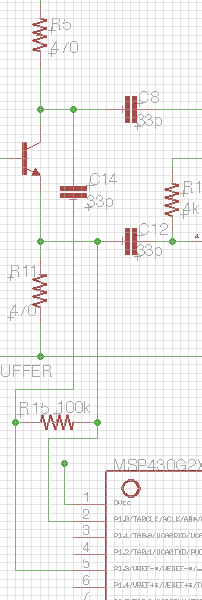I want to use the comparator (of an MSP430G2553) to square-up a 200mV signal at up to 3.8MHz in a frequency-locked loop oscillator. This would require toggling at close to the maximum speed to drive the counter). Before I try it, any thoughts on whether it would work? Otherwise I'll need an external Schmitt trigger to square up the waveform.
-
Ask a related question
What is a related question?A related question is a question created from another question. When the related question is created, it will be automatically linked to the original question.


